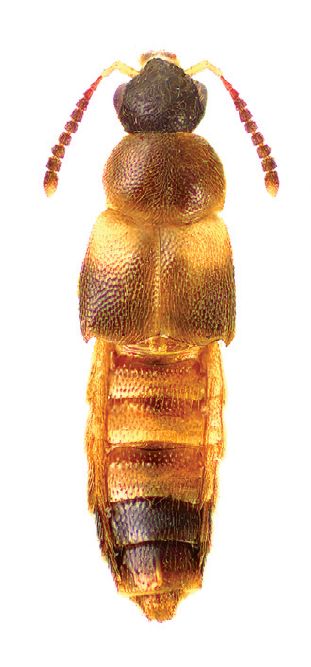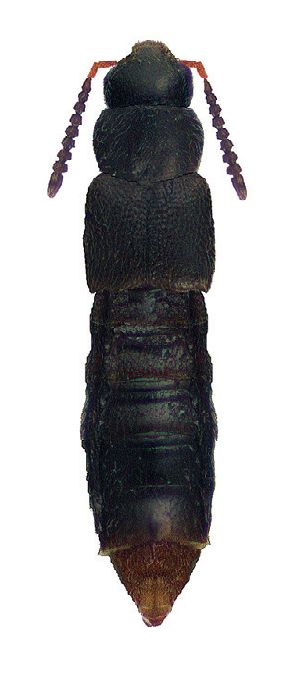
Genus is a taxonomic rank above species and below family as used in the biological classification of living and fossil organisms as well as viruses. In binomial nomenclature, the genus name forms the first part of the binomial species name for each species within the genus.

In taxonomy, binomial nomenclature, also called binary nomenclature, is a formal system of naming species of living things by giving each a name composed of two parts, both of which use Latin grammatical forms, although they can be based on words from other languages. Such a name is called a binomial name, a binomen, binominal name, or a scientific name; more informally it is also historically called a Latin name. In the International Code of Zoological Nomenclature (ICZN), the system is also called binominal nomenclature, with an "n" before the "al" in "binominal", which is not a typographic error, meaning "two-name naming system".

Columbidae is a bird family consisting of doves and pigeons. It is the only family in the order Columbiformes. These are stout-bodied birds with short necks and short slender bills that in some species feature fleshy ceres. They primarily feed on plants, and can be taxonomically divided amongst granivores, that feed mostly on the ground on seeds, and frugivores, that feed mostly on fruits, from branches. The family occurs worldwide, often in close proximity with humans, but the greatest variety is in the Indomalayan and Australasian realms.
In biology, a monotypic taxon is a taxonomic group (taxon) that contains only one immediately subordinate taxon. A monotypic species is one that does not include subspecies or smaller, infraspecific taxa. In the case of genera, the term "unispecific" or "monospecific" is sometimes preferred. In botanical nomenclature, a monotypic genus is a genus in the special case where a genus and a single species are simultaneously described.

In zoological nomenclature, a type species is the species name with which the name of a genus or subgenus is considered to be permanently taxonomically associated, i.e., the species that contains the biological type specimen. A similar concept is used for suprageneric groups and called a type genus.

Crataraea is a genus of rove beetles in the family Staphylinidae. There is at least one described species in Crataraea, C. suturalis.
Apalonia is a genus of rove beetles in the family Staphylinidae. There are at least 40 described species in Apalonia.

The Solanaceae, or the nightshades, is a family of flowering plants that ranges from annual and perennial herbs to vines, lianas, epiphytes, shrubs, and trees, and includes a number of agricultural crops, medicinal plants, spices, weeds, and ornamentals. Many members of the family contain potent alkaloids, and some are highly toxic, but many—including tomatoes, potatoes, eggplant, bell, and chili peppers—are used as food. The family belongs to the order Solanales, in the asterid group and class Magnoliopsida (dicotyledons). The Solanaceae consists of about 98 genera and some 2,700 species, with a great diversity of habitats, morphology and ecology.

Drusilla canaliculata is a species of rove beetle in the family Staphylinidae. It is found in Europe and Northern Asia and North America.

Phymatura blanchardi is a species of rove beetle in the family Staphylinidae.

Phymatura is a genus of rove beetles in the family Staphylinidae. There are at least 2 described species in Phymatura.

Homalotini is a tribe of rove beetles in the family Staphylinidae. There are at least 30 genera and 200 described species in Homalotini.

Leptusa carolinensis is a species of rove beetle in the family Staphylinidae. It is found in North America.

Leptusa is a genus of rove beetles in the family Staphylinidae. There are at least 20 described species in Leptusa.
Acrotona austiniana is a species of rove beetle in the family Staphylinidae. It is found in North America.

Acrotona is a genus of rove beetles in the family Staphylinidae. There are at least 30 described species in Acrotona.
Aleodorus is a genus of rove beetles in the family Staphylinidae. There are at least four described species in Aleodorus.

Falagriini is a tribe of rove beetles in the family Staphylinidae. There are about 11 genera and at least 20 described species in Falagriini.

Hoplandria lateralis is a species of rove beetle in the family Staphylinidae. It is found in Central America, North America, and South America.

Hoplandria is a genus of rove beetles in the family Staphylinidae. There are about 13 described species in Hoplandria.












